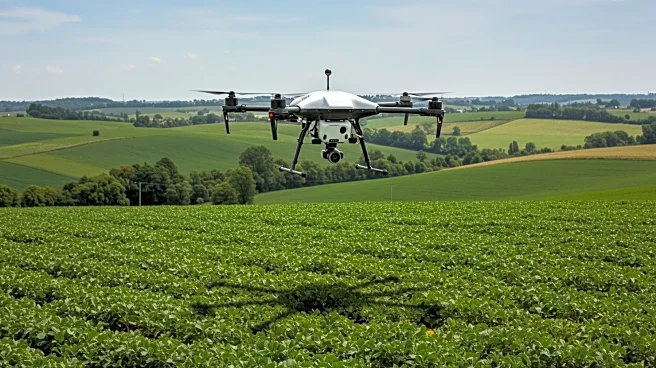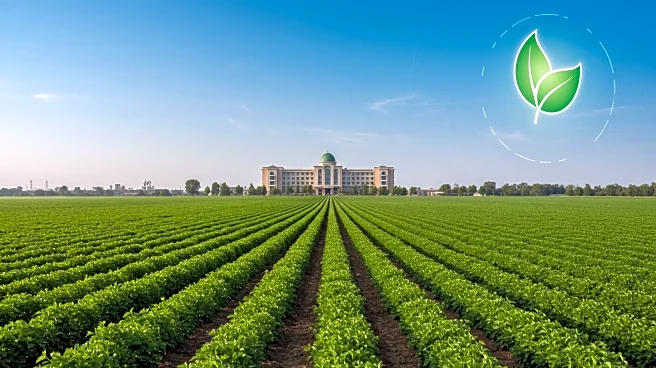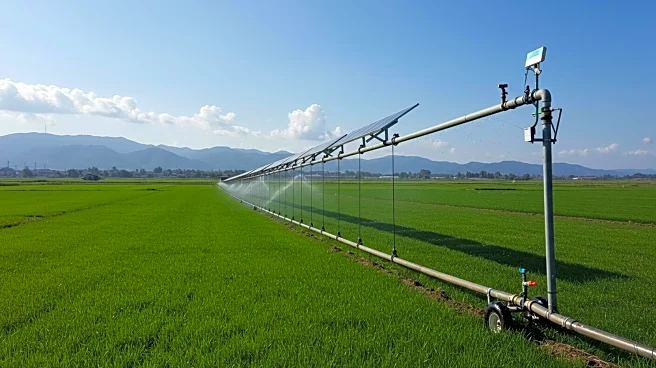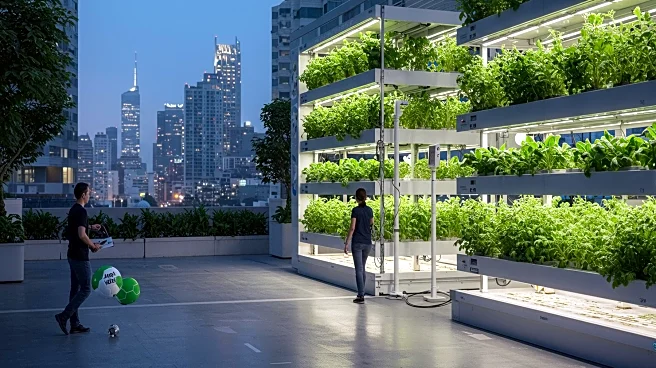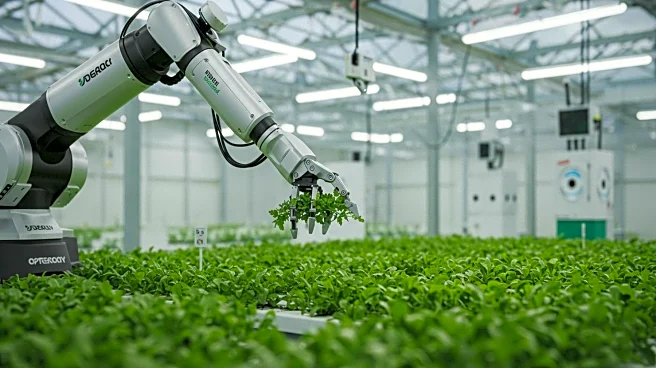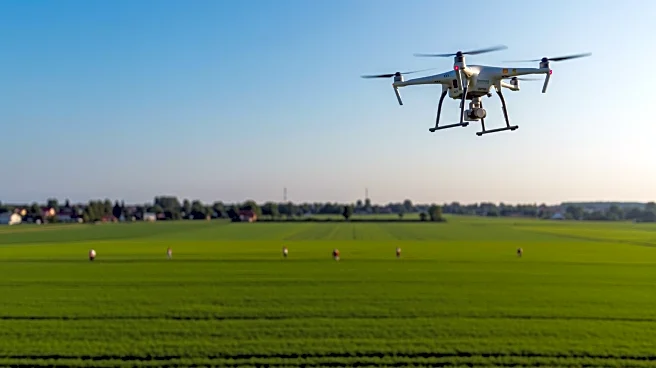Rapid Read • 8 min read
California's agriculture sector is undergoing a significant transformation with the adoption of vertical farming techniques by 2025. This shift is driven by the need to address water scarcity, urbanization pressures, and the global demand for sustainable agriculture. Vertical farms are projected to supply over 13% of California's leafy greens, reducing the environmental impact associated with traditional farming methods. The state's diverse climate and advanced infrastructure support the production of over 400 different commodities, including almonds, pistachios, grapes, strawberries, and lettuce. The integration of smart technology into farming practices is reshaping food security, with vertical farming offering controlled environments that minimize land use and water needs.
AD
The adoption of vertical farming in California is crucial for addressing environmental challenges such as droughts and resource scarcity. By using up to 90-95% less water per ton of produce, vertical farms offer a sustainable solution to traditional agriculture's high water consumption. This innovation not only supports local food supply but also enhances California's position in global markets, with over 50% of its agricultural production being exported. The state's focus on technology-driven farming practices ensures resilience against climate change, securing long-term food security and economic stability. Stakeholders, including farmers and agri-tech companies, stand to benefit from increased efficiency and reduced environmental impact.
As vertical farming becomes more mainstream, California is expected to see a 30% increase in crop variety production by 2025, boosting export opportunities. The state's agricultural sector will continue to invest in IoT sensors, AI-driven decision support, and energy-efficient LED lighting to optimize growth and minimize resource waste. The expansion of vertical farms into suburban and rural areas will supplement traditional production, diversifying crop offerings and meeting consumer demand for fresh, traceable food. Continued innovation in resistant crop varieties and digital pest prediction will be crucial to secure yields and navigate ongoing challenges such as labor shortages and climate change.
The shift towards vertical farming in California highlights broader ethical and environmental implications. By reducing reliance on pesticides and minimizing water use, these practices contribute to safer, cleaner food production and environmental conservation. The integration of blockchain technology for supply chain transparency ensures traceability from farm to shelf, enhancing consumer trust and supporting global export credibility. As urbanization limits new farmland, vertical farming offers a high-efficiency alternative that aligns with modern sustainability goals. This transformation reflects a growing commitment to balancing production with environmental stewardship in the era of climate uncertainty.
AD
More Stories You Might Enjoy



